Rooftop Solar: Reduce Your Electricity Bill and Increase Savings
Rooftop Solar: Reduce Your Electricity Bill and Increase Savings
The savings from installing rooftop solar will accrue to the consumers by reducing their electricity bill. For the units generated from the solar solution, the consumer does not have to pay the bill to the distribution company (Discom). However the consumer does not get the waiver from paying all the charges.
Breakup of Electricity Bill
The Discom electricity bill consists of the Demand Charges, Energy Charges, Fuel Surcharge, Electricity Duty, Various Taxes, Surcharge on Regulatory ..\assets, and meter rents. Out of these, all charges except Electricity Duty and Various Taxes are specified the State Electricity Regulatory Commission. Electricity Duty is specified by the State Government while the taxes are specified by the Municipalities and the State Government based on the end usage of taxes.
Electricity Bill on Installing Rooftop Solar
The Demand charges or the Capacity Charges are specified as the fixed charges to be paid by a consumer in a month. These charges may vary depending on the consumer’s connected load (in KW terms) or may be a constant for a month. These charges will be borne by the consumer irrespective of the solar generation from the rooftop solar solution.
How Electricity Bill is Calculated on Installing Rooftop Solar
The Energy Charges are specified as the per unit (or kWh) rate and are calculated as the multiplication of energy units consumed and the per unit rate. Also for certain consumers, the energy charges are specifically provided in kVAh terms instead of kWh terms. For converting the consumption in kVAh to kWh, just multiply the kVAh units by the power factor (can take a value of 0.9 normally). The generation from the solar solution (as read from the meter installed with the roof top solar solution) will be reduced from the units consumed as per the consumer’s electricity meter. As such the energy charges will reduce to the extent that the units generated from the solar solution.
The Fuel Surcharge is generally specified by the State regulator on a quarterly basis. The consumers can expect to witness a variation in these charges during a year itself. These charges are sometimes specified as the percentage of the demand charges and the energy charges. In few other states, these charges are specified as the per unit rate which needs to be multiplied by the energy units consumed to get the total Fuel Surcharge. The Fuel Surcharge will also reduce to the extent of generation from rooftop solar.
About Taxes
Electricity duty (ED) and Various Taxes (like municipal tax, water tax etc) are specified on per unit (kWh) of consumption basis by the State Government. Generally the state government specifies differential rates of ED for the units consumed and the units generated from a captive power plant. Most states have not specified an electricity duty to be charged against the rooftop solar generation. As such the consumer will save on the ED also when generating from rooftop solar.
The Municipalities and the State Government have not provided any directive on the collection of various taxes against the generation from solar, therefore the savings from these taxes can be assumed when generating from the rooftop solar.
Surcharge on Regulatory ..\assets are specified by the Regulator as a means to recover the past losses incurred by the Discom. This surcharge is typically specified as a percentage on the Demand Charges and the Energy Charges. The solar generation will help to save this regulatory surcharge also.
Applicable Savings from Rooftop Solar Installation
The table below summarises the savings applicable against various charges.
| SNo. | Type of Tariff or Charge as per Customer Bill | Applicable for the Savings from the Roof top Solar Generation |
| 1 | Demand Charges | Not Applicable |
| 2 | Energy Charges | Applicable |
| 3 | Fuel Surcharge | Applicable |
| 4 | Electricity Duty | Applicable |
| 5 | Various Taxes | Applicable |
| 6 | Surcharge on Regulatory ..\assets | Applicable |
| 7 | Meter Rents and other Miscellaneous Items | Not Applicable |
Suggested Articles
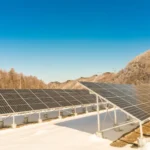
Latest 100 kW Solar Plant Price in Delhi | Subsidy, ROI & Payback
Thinking about installing a 100 kW solar system in Delhi? This 2025 guide breaks down the 100 kW Solar Plant Cost in Delhi, explaining price per watt, total investment, energy generation, and key benefits for industries and businesses.
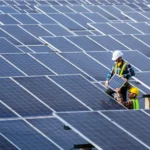
Developers fear unfair state-specific levies will make solar more expensive
Developers in India are concerned that state-specific levies on solar projects could increase costs, slow adoption, and impact the growth of renewable energy across residential, commercial, and industrial sectors.
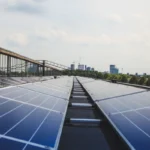
Why Solar Energy Makes Sense for the Healthcare Industry
Explore how the healthcare industry can leverage solar energy to reduce electricity bills, enhance reliability, and support green initiatives.

How to Clean and Maintain Solar Power System for Maximum Efficiency
Regular cleaning of your solar power system is essential to maintain maximum efficiency and energy output. Dust, bird droppings, and pollution can reduce performance by up to 20%. This blog explains the right cleaning methods, schedules, and safety tips for residential, industrial, and commercial solar systems.

COP27: Harnessing Solar Energy for a Sustainable Future
COP27 is the latest in a long line of global climate conferences, which have been held regularly since 1994. The United Nations Framework Convention on Climate Change (UNFCCC) was created at the 1992 Rio Earth Summit.
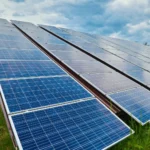
500 kW Solar Power Plant Cost in UP 2025 | Latest Price, Subsidy & ROI
Thinking of setting up a 500 kW solar power plant in Uttar Pradesh? Discover the 2025 cost estimate, available subsidies, and expected ROI. Learn how commercial and industrial projects in UP can reduce energy expenses and achieve long-term savings with solar energy.

Sustainable Solar Panel Disposal: Recycling for a Greener Future
Sustainable solar panel disposal ensures old or damaged panels are recycled responsibly, reducing waste and environmental harm. By adopting eco-friendly recycling and reuse practices, we can recover valuable materials, lower carbon impact, and make solar energy truly sustainable from installation to end-of-life.
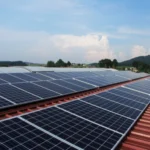
पीएम सूर्य घर योजना 2025 – मुफ्त बिजली पाने के लिए ऐसे करें आवेदन
पीएम सूर्य घर योजना ऑनलाइन आवेदन 2025: मुफ्त बिजली पाने की आसान स्टेप-बाय-स्टेप प्रक्रिया यहाँ पढ़ें।

Can Solar Systems Support Industrial Motors and Machines? A Complete Guide
Discover how using solar for heavy machines can power industrial equipment reliably and cost-effectively for greener operations.
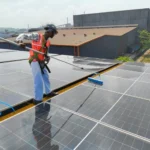
Monitoring Services for Solar Plants by Smart Roof Solar to Maximize Performance and Efficiency
Smart Roof Solar provides advanced monitoring services for solar plants to ensure maximum performance and efficiency. With real-time data tracking and intelligent analytics, our monitoring solutions help detect issues early, reduce downtime, and enhance the overall energy yield of your solar system.